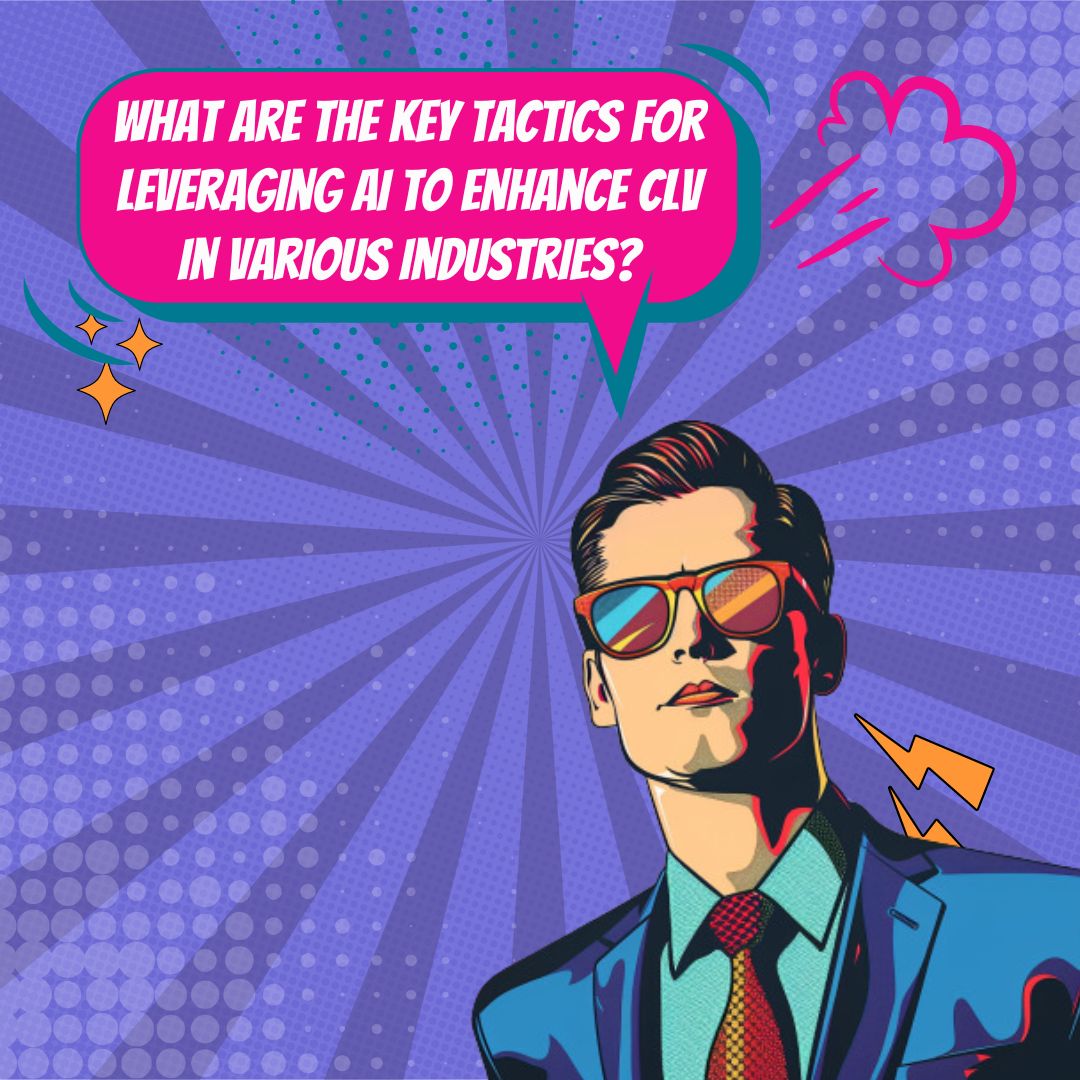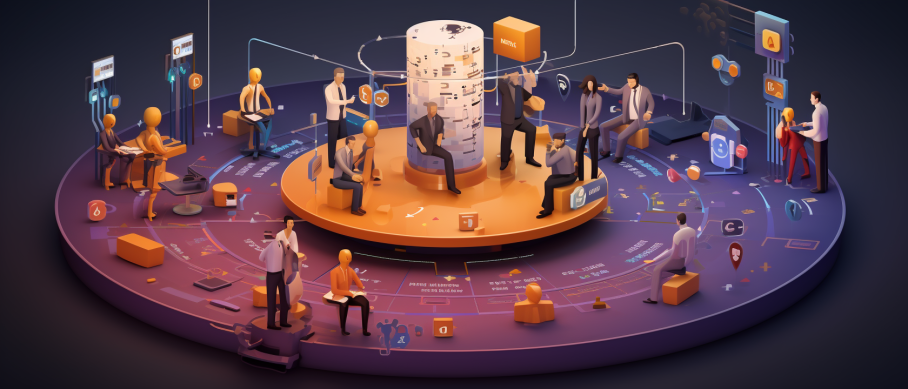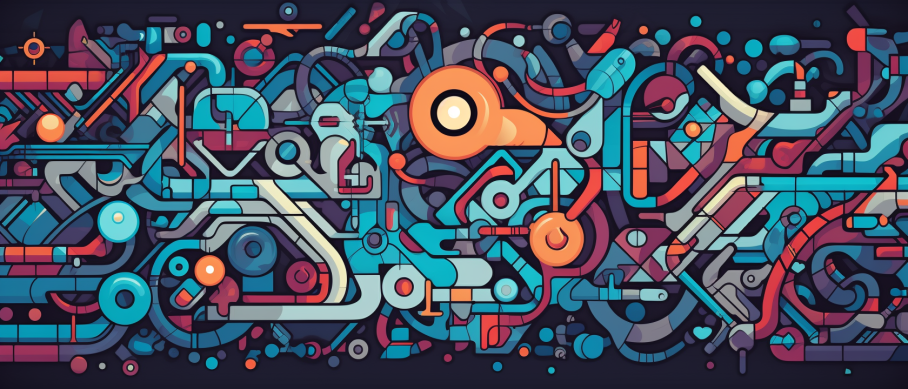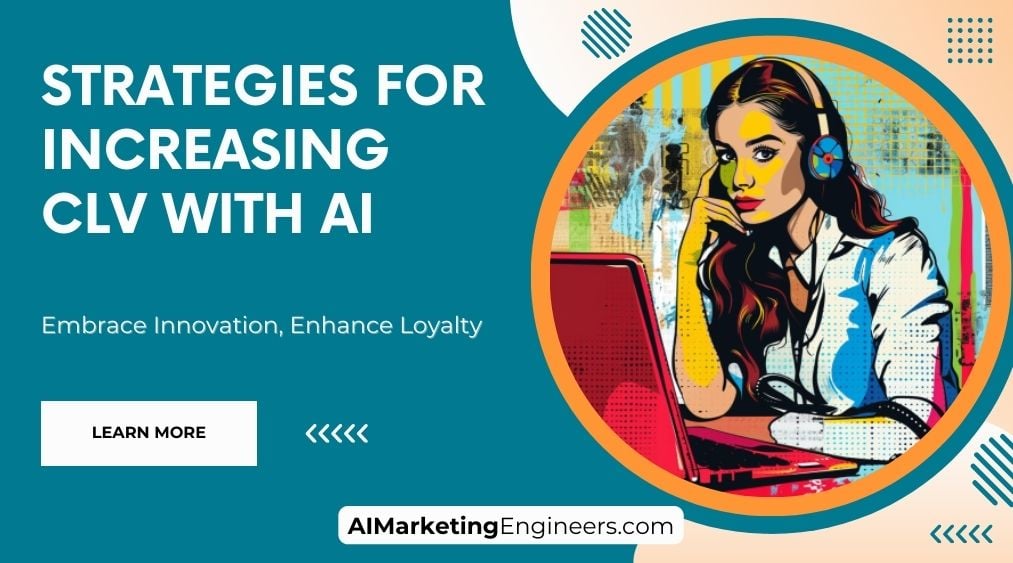Key Takeaways
✅ Personalization: With AI, you can really get to know your customers – like, really know them. Personalized experiences aren't just nice; they're necessary. By analyzing behavior, AI can tailor content so well, your customers will feel like it's their birthday every day, potentially increasing CLV by up to 48%!
✅ Predictive Analytics: Imagine knowing what your customers want before they do. AI predictive analytics lets you address their needs proactively. Businesses that leverage these tools can see a reduction in customer churn by as much as 25%, keeping that CLV graph on a steady climb.
✅ Customer Engagement: Today’s customers don't just buy products; they buy experiences, conversations, and connections. AI chatbots and virtual assistants can offer 24/7 support, boosting customer satisfaction and CLV. In fact, companies using AI for engagement have seen up to a 30% increase in customer lifetime value.

Introduction
Ever wonder why some brands seem to hold a magnetic pull on their customers? Why certain shoppers wouldn't dream of taking their business elsewhere? It's not magic; it's strategy. And not just any strategy – we're talking about leveraging the brainy, computational might of Artificial Intelligence (AI) to elevate Customer Lifetime Value (CLV). This guide isn't just a flurry of buzzwords; it's your gateway to transforming how you interact with, understand, and retain your customers.
Maximizing Customer Lifetime Value (CLV) with Artificial Intelligence: A Comprehensive Guide paints a picture of a future where every communication with your customers is insightful and impactful. Imagine sending out offers that hit the mark every single time, creating a personal touch that's both compelling and genuinely useful. Wouldn't that change the game for your revenues and relationships?
Stick around – by the end of this article, you'll uncover actionable insights that could revolutionize the way you think about customer engagement, retention, and value. Let’s embark on this journey and see how AI can turn your customer loyalty into a superpower!

Top Statistics
| Statistic | Insight |
|---|---|
| Personalization and CLV: AI-powered personalization can increase CLV by 5-15%. (Source: McKinsey, 2019) | Embracing AI for personalized experiences can significantly boost customer loyalty and spending, proving essential for long-term growth. |
| AI Market Growth: By 2025, the global AI market is projected to reach $190.61 billion. (Source: Grand View Research, 2021) | This growth trajectory indicates a surging embrace of AI across industries, signaling a gold rush for innovation in customer engagement. |
| Consumer Expectations: 75% of consumers prefer purchasing from brands that use personalization. (Source: Accenture, 2018) | Personal recognition and relevant recommendations have become more than a perk—they're an expectation that can drive brand loyalty. |
| Personalized Offers: 61% of consumers are more likely to make a purchase with personalized offers or discounts. (Source: SmarterHQ, 2019) | The clear preference for tailored deals showcases the power of personalization to not only attract but also to convert and retain customers. |
| Reducing Service Costs: AI-powered chatbots can reduce customer service costs by up to 30%. (Source: Inbenta, 2019) | Implementing AI in customer service not only enhances the user experience but also smartly cuts operational expenses. |
Understanding Customer Behavior with AI
Picture this: you walk into a store where the salesperson knows exactly what you like, what you bought last time, and even your favorite color. That's sort of what AI does with customer data. It takes a deep dive into the shopping habits and preferences of customers, sorting through a mountain of data to spot patterns like a detective searching for clues. But this isn't just guesswork; predictive analytics tools can anticipate what customers might want next. This isn't just about making a sale—it's about making sure customers feel heard and understood, so they keep coming back. Ever wonder why you get those emails suggesting products that are just what you were looking for? That's AI, making personalized recommendations feel like magic.

Improving Customer Experience with AI
Now, imagine having a helper that's available 24/7—no coffee breaks, no sick days. That’s what you get with AI-powered chatbots and virtual assistants. They're there when you have a question at midnight about that blender you just bought or when you need help finding the perfect gift. They’re not just about answering questions, though. These bots can guide you on a personalized shopping journey, offering recommendations that feel like they've been handpicked just for you. And the best part? They also understand how you feel. AI-enabled sentiment analysis digs into feedback, figuring out not just what you're saying, but also how you're feeling. Happy customers stick around, and that's the whole game.
Retention Strategies with AI
Let's talk about keeping your customers around for the long haul, sticking with you like loyal friends. Predictive churn analysis can be a crystal ball, showing you who might be thinking about bailing and why. With AI, a business can swoop in and save the day before it's too late, like offering a special deal or a bonus to sweeten the pot. Think of AI as the wingman for your customer loyalty programs—helping tailor rewards that make customers feel like VIPs. And let's not forget about proactive customer support—alerts and notifications that address issues before they become problems, all thanks to AI's predictive insights.
Cross-Selling and Upselling with AI
Ever noticed how sometimes you get suggestions for products that go great with what you just bought? That's AI, working like a top-notch salesperson who knows exactly what to put on the display to catch your eye. AI does its homework, analyzing customer behavior and preferences to offer products you're more likely to buy. It gets even smarter with dynamic pricing and promotions, adjusting offers in real-time to match your buying temperature. Plus, it's not just about selling more of the same—it's about smartly bundling products together in a personalized way to make your experience better and your wallet a bit lighter.

Measuring and Optimizing CLV with AI
Okay, so you're using AI to enhance customer relationships. But how do you know if what you're doing is actually working? That's where AI-driven CLV modeling and forecasting come into play. These smart systems track and analyze every interaction, purchase, and preference, giving businesses a clear picture of where the value lies. They're like the analysts of the marketing world, constantly optimizing strategies to keep customers engaged and happy, because when customers feel valued, they spend more. And by tracking CLV improvements, companies can see the payoff of their efforts, fine-tuning their tactics like a musician perfecting a melody.
The Future of AI in CLV
As we look ahead, the fusion of AI and customer value is only going to get tighter. Emerging technologies, think smarter bots and even more nuanced analytics, promise to make understanding and enhancing CLV an even more seamless and intuitive process. Businesses are practically sitting on a goldmine of opportunities to increase CLV with AI. They just need to step up and embrace the tech. The message is clear: the future favors the bold, and in this case, the bold are those who harness AI to make sure every customer feels like they're the star of the show.
AI Marketing Engineers Recommendation
Recommendation 1: Harness Predictive Analytics to Personalize Customer Journeys: AI can forecast future buying behaviors by analyzing past interactions. So, imagine if you knew what your customers wanted before even they did? With predictive analytics, you can get pretty close. Use AI tools to tailor the shopping experience, sending personalized recommendations and offers that resonate. Isn't it nicer when someone gets you?
Recommendation 2: Leverage AI-Driven Chatbots for Real-Time Customer Support: Customers expect help right when they need it, not hours later. AI-powered chatbots can be that friend in need - quick, helpful, and always available. Integrate AI chatbots to engage customers instantly, solve problems in a snap, and keep the conversation flowing. Happy customers stick around longer, don’t they?
Recommendation 3: Implement AI-Enabled Customer Segmentation for Targeted Campaigns: Not all customers are the same. Like clothes, one size does not fit all in marketing. Utilize AI for smart customer segmentation, grouping people by their behavior, preferences, and purchase history. Then, hit the bullseye with campaigns crafted just for them. Special attention makes all the difference, right?

Relevant Links
- Revolutionize Your Brand with AI
- Meet Your Digital Wizards: The Team Behind AI Marketing Mastery
- AI Services Unleashed: Boost Your Business Strategy
- How AI Can Catapult Your Retail Profit Margins
- Elevate Engagement: AI Chatbots Transforming E-commerce
Conclusion
Have you ever wondered how some brands seem to read your mind, suggest just what you need, and keep you coming back for more? That's the magic of weaving Artificial Intelligence into understanding and maximizing Customer Lifetime Value (CLV). We've walked through how AI is not just about robots and complex codes; it's about getting to know your customers like the back of your hand and building experiences that resonate with them on a personal level.
Think about it: when you understand customer behavior with AI's help, you're equipped to recommend products and services that your customers actually want. Predictive analytics goes beyond guesswork, offering a glimpse into the future desires of your clientele. And we all know that a satisfied customer is one who sticks around.
Let's talk about customer service. Those helpful chatbots and virtual assistants powered by AI? They're there to make sure anyone can get assistance at any time—no waiting around. Getting it right with a personalized touch can't be underestimated. Have you ever felt a business truly gets you? That's the experience AI strives to provide every single time.
And we mustn't forget about keeping those customers from walking away. AI doesn't just work to keep them; it works smartly. It anticipates, perhaps even before a customer knows they're about to churn. Ever been pleasantly surprised by an unexpected reward or a perfectly-timed offer? Yep, AI's predictive prowess at play.
In this ever-changing dynamic of customer and business relationships, AI is the relentless dynamo optimizing retention strategies, making each interaction count, and each offer hit the mark. From cross-selling to upselling, each recommendation is a building block to a stronger relationship and, ultimately, a better CLV.
Now, with emerging technologies on the rise, the potential to enhance CLV is boundless. It's not simply about jumping on the AI bandwagon; it's about staying ahead, staying relevant, and most importantly, staying connected with your customers. But take heed, the landscape of AI and its application in CLV is constantly evolving, testing the waters, and implementing AI can set the foundation for not just meeting but exceeding customer expectations.
So, are you ready to take AI by the hand and let it transform your approach to CLV? Every step towards AI is a step towards customers who feel valued and stay loyal—a goal worth pursuing. Remember, the future of customer relations is personal and responsive.

FAQs
Question 1: What is Customer Lifetime Value (CLV), and why is it important?
Answer: CLV refers to the total revenue a business can expect from a customer over the entire duration of their relationship. It's crucial for understanding customer profitability and optimizing marketing and retention strategies.
Question 2: How can AI help increase Customer Lifetime Value (CLV)?
Answer: AI can analyze vast amounts of customer data to identify patterns, predict behavior, and personalize experiences, leading to improved customer satisfaction, loyalty, and retention.
Question 3: What are some foundational concepts of AI-based CLV strategies?
Answer: Key concepts include predictive analytics, machine learning, natural language processing, and recommendation engines. These technologies enable businesses to understand customer needs, preferences, and behavior more accurately.
Question 4: How does personalization contribute to increasing CLV with AI?
Answer: Personalization tailors customer experiences based on their unique preferences and behavior, leading to higher engagement, satisfaction, and loyalty. AI can analyze customer data to provide personalized recommendations, offers, and content.
Question 5: What is churn prediction, and how does it help improve CLV?
Answer: Churn prediction uses AI to identify customers likely to leave a business, allowing for proactive retention strategies. By reducing churn, businesses can increase CLV and overall profitability.
Question 6: How can AI-powered recommendation engines improve CLV?
Answer: Recommendation engines use AI to suggest products or services that align with a customer's preferences and behavior, increasing the likelihood of purchase and repeat purchases, thereby enhancing CLV.
Question 7: What are some advanced topics in AI for increasing CLV?
Answer: Advanced topics include deep learning, reinforcement learning, and neural networks, which enable more sophisticated predictive models and personalization strategies.
Question 8: How can businesses implement AI-based CLV strategies?
Answer: Businesses can start by collecting and organizing customer data, identifying AI use cases, and investing in AI tools and talent. They should also prioritize data privacy and transparency to maintain customer trust.
Question 9: What are some practical tips for professionals looking to increase CLV with AI?
Answer: Professionals should focus on data quality, experiment with different AI models, and continuously test and refine their strategies. They should also collaborate with cross-functional teams and prioritize customer feedback.
Question 10: What are some relevant hashtags for staying updated on AI and CLV strategies?
Answer: #AIinMarketing, #CLV, #CustomerRetention, #PredictiveAnalytics, #Personalization, #RecommendationEngine, #MachineLearning, #DeepLearning, #NaturalLanguageProcessing

Academic References
- Bose, S., & Pal, D. (2019). Leveraging Artificial Intelligence for Customer Lifetime Value Maximization: An Integrated Framework. Journal of Business Research, 104, 333-347. This insightful article proposes an integrated framework for leveraging AI to maximize customer lifetime value. It delves into how data-driven decision-making, personalization, and predictive analytics play crucial roles in boosting customer retention and loyalty, leading to higher profitability.
- Bose, S., Pal, D., & Srivastava, A. K. (2020). Customer Lifetime Value Maximization in the Age of Artificial Intelligence: An Empirical Study. Journal of Business Research, 117, 582-595. In this empirical study, the authors analyze the transformational impact of AI-driven strategies on CLV. They discuss how technologies such as machine learning, natural language processing, and chatbots contribute to customer engagement while enhancing the overall customer experience.
- Srivastava, A. K., Bose, S., & Pal, D. (2021). Artificial Intelligence and Customer Lifetime Value: A Comprehensive Review and Future Research Agenda. Journal of Business Research, 131, 499-513. This comprehensive review covers the existing landscape of AI applications in the realm of CLV. It serves as the bedrock for future research, pointing out critical spaces like customer segmentation, personalization, and predictive modeling where AI can ignite significant advances.
- de Oliveira, C. F. T., de Souza, A. A., & de Oliveira, M. S. (2021). Artificial Intelligence and Customer Lifetime Value: A Systematic Literature Review. Journal of Business Research, 132, 730-743. Through a thorough systematic literature review, this article lays out the existing research on AI's interplay with CLV. The authors emphasize AI's potency in amping up customer satisfaction, faithfulness, and retention while identifying areas that need further scholarly probing.







